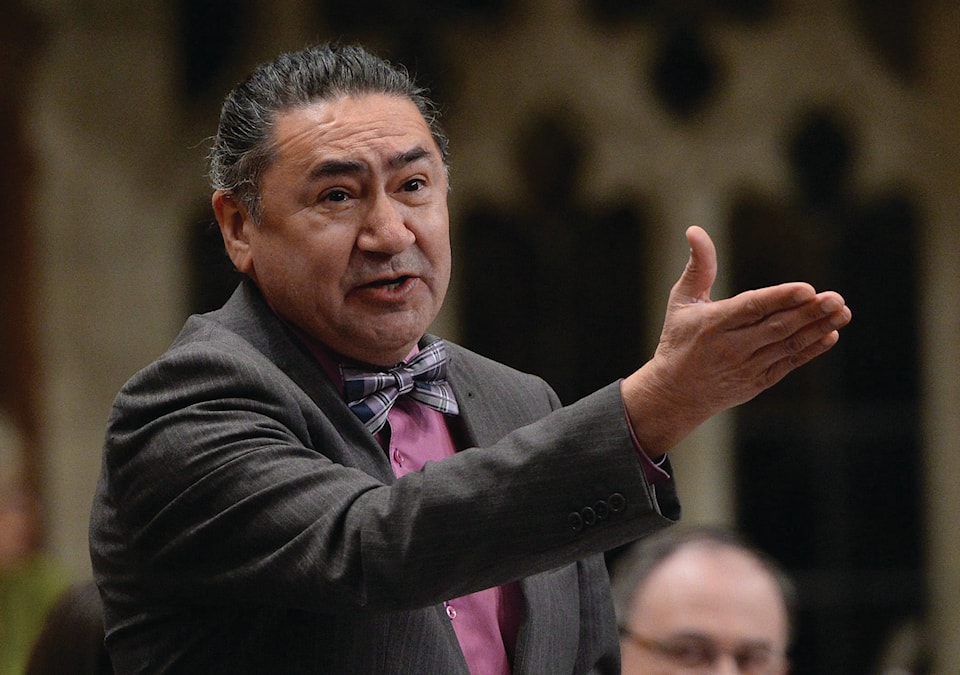This is the third part of a three-part June series looking at the significance of the potlatch for the Kwakawaka’wakw of the Pacific Northwest, the attempted cultural genocide through a federal anti-potlatch ban and how artists are creating new forms of expression in conjunction with an upcoming thematic program entitled Potlatch 67-67: The Potlatch Ban - Then and Now, opening at the Comox Valley Art Gallery July 20.
The praise on social media ranged from deep gratitude to calls to ‘Be like Romeo.’
A private member’s bill introduced by NDP MP for Abitibi-Baie James-Nunavik-Eeyou Romeo Saganash passed third reading and adoption by the House of Commons on May 30, 2018.
Thirty years ago, Saganash was invited to the United Nations to negotiate the United Nations Declaration on the Rights of Indigenous Peoples.
The bill affirms the rights of Indigenous people and the individual rights of Indigenous women, men and children.
More than 10 years after it was adopted at the UN, his bill to implement the declaration into Canadian law is now in the hands of the Senate.
Bill C-262 is an act to ensure the laws of Canada are in harmony with the United Nations Declaration on the Rights of Indigenous Peoples (UNDRIP); for Saganash, the bill stands for justice when it comes to the rights of Indigenous people in the country.
“I say indeed for all Canadians, because Canadians believe in the human rights of the first peoples of this land,” he said as he addressed the house. “It is the most comprehensive United Nations document that deals with the political rights, the economic rights, the cultural rights, the environmental rights and I would add their spiritual rights. It’s the longest discussed and negotiated human rights instrument in the history of the United Nations.”
• • •
In 1884, many non-Indigenous colonists saw the act of a potlatch, including the distribution of wealth and sharing of food, as excessive and wasteful. According to First Nations & Indigenous Studies at the University of British Columbia, Indian Agents and missionaries felt potlatches interrupted assimilation tactics.
They wanted First Nation people to shift from an economic system of redistribution to one of private property ownership.
On Jan. 1 1885, the anti-potlatch proclamation became law, and while the law disrupted many cultural traditions, many First Nations continued to potlatch, at the risk of being arrested and jailed.
| Florence Matilpi (nee Mountain) and her grandson Sean Matilpi with headdress belonging to Florence’s grandfather, Chief Nage’, Harry Mountain, U’mista Cultural Centre, 1980. Photo by Vickie Jensen, UPN-0147 |
In 1951 following the Second World War, the Indian Act was amended. Some credit the change to Canadians recognizing the concept of human rights following the war.
A year after the law was deleted, the first legal potlatch was hosted by Chief Mungo Martin in Victoria.
Judge Alfred Scow was the first Aboriginal person to graduate from a B.C. law school, the first aboriginal called to the bar in B.C and the first aboriginal judge appointed to the Provincial Court of B.C.
He said the provision of the Indian Act prevented the passing down the oral history of First Nations people and the passing down of values.
“It meant an interruption of the respected forms of government that we used to have, and we did have forms of government be they oral and not in writing before any of the Europeans came to this country. We had a system that worked for us. We respected each other. We had ways of dealing with disputes.”
The anti-potlatch law was deleted from law, but never formally repealed through formal legislative action.
• • •
For Rachel Blaney, creating a Canada that is balanced and fair is very personal.
The NDP Member of Parliament for North Island-Powell River was adopted when she was four years old by a First Nations family. While she is not biologically First Nations, she grew up thinking she was.
“It never occurred to me that I had come from anywhere else. They were my family,” she told The Record.
| Rachel Blaney surrounded by family. |
Growing up in Terrace, her adoptive family was part of the Stellat’en First Nation, and when she filed her nomination papers in 2015, she could have identified herself as First Nation. She chose not to, out of respect for those who are biologically so.
“Reconciliation is so important - so many people are coming back to their culture; it was disallowed for so long. Potlatches are so important - it was governance, sharing love, celebrating births and so many phases of life. It was a way to grieve … they are very complex unless you are a part of it.”
When Blaney thinks about potlatches, she believes they are very much a part of modern Indigenous life - they are something that can grow to future generations and young people are starting to understand it is a part of their future.
“Culture is always changing and growing. It’s a beautiful and total representation of the way that Indigenous culture is alive and growing; it’s a new vibrancy to communities all across Canada.”
She said UNDRIP and Bill C-262 (which currently sits at second reading in the Senate) are opportunities to truly look at the history of Canada, which means looking at the reality of Indigenous people more honestly.
“We finally have to look at Indigenous people (to ensure) they are treated like everyone else. Bill C-262 is important and sets a stage and framework. This is really looking at a broad system that at its very core is very colonial; it’s a lot of work, but it’s just not about human rights, it’s about creating a Canada that is more balanced and fair.”
hiłt̕sist̕a’a̱m (the copper will be fixed), Potlatch 67–67: The Potlatch Ban – Then and Now is set for July 20 to Oct. 4 at the Comox Valley Art Gallery. For more information, visit potlatch6767.com, or visit the Potlatch6767 Facebook page.
